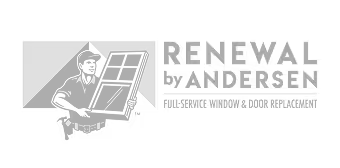For all your home improvement needs Call 1-800 REMODEL
It’s that easy!
Ask our genius AI your home improvement questions 24 hours a day — he’s smart, very funny, and makes connecting with top-rated pros actually fun!








.avif)





.avif)



1-800 Remodel
is Your Shortcut to a Better Home
1800Remodel is the name homeowners trust when it’s time to upgrade.
You’ve seen us on TV. Heard us on the radio. Found us right here.
Now let us make your home project simpler, smarter, and way more fun!
15 Years+
Helping homeowners get it done right.
4 Million+
Homeowners interested in home improvement projects
10,000+
Service providers through one phone number

It is now, with our
AI genius, Artie!
Artie is 1-800Remodel’s AI concierge — a home improvement genius, and a pretty funny guy! See for yourself!
Got a question? Artie’s got answers. Need a pro? 1-800 Remodel can connect you quickly and easily to a top pro in your area.
Available 24 hours a day. Always ready to answer your home improvement questions and put a smile on your face.
Let's Make Your Home More Wonderful Today.
Choose a category below and let's get started!
Your Contractor Friend Who Actually Picks Up the Phone
Artie is like having a contractor in your pocket - ready 24/7 to answer any question you have about your home. No appointment needed, no pressure to hire anyone. Just expert advice whenever you need it.
Quick Questions
Planning Projects
Emergency Help

Just like texting a contractor friend - except Artie's available at 2am and never gets annoyed by your questions. Get expert advice, learn your options, and only connect with a pro when YOU'RE ready.
1-800 Remodel Makes Finding A Pro Easier And More Enjoyable
Don’t have time to figure it all out? That’s what Artie’s for.






Prefer a Call Back? No Problem!

Our team (and Artie!) are standing by to help.

How We Turn Home Upgrades into Smiles
Hiring the wrong contractor can turn a dream project into a real headache.
That’s why we:
We've helped thousands of homeowners. You’ve seen us on TV and heard us on the radio — now it’s your turn!
We Take Our Comedy Seriously
Artie isn’t just smart — he’s actually funny. That’s because we’ve brought in real comedy writers who’ve written for some of the funniest places on earth, including:






One Call for Every Upgrade. A smarter way to make your home smile


I’ll Take Care of It Next Month Right Now
Your home deserves better!
.avif)
Making Homeowners Smile
Home improvement shouldn’t be a headache.
With 1-800 Remodel, getting your home improvement project started is fast, easy and fun! Artie’s got the jokes. We’ve got the pros. You get the results.
Happy homes, happy homeowners.
Are You a Pro?
Let’s Build Better — Together
Are you a licensed home improvement professional or a business looking to connect with motivated homeowners?
Join our network of vetted pros and trusted partners to:
Whether you're a solo contractor, part of a growing team, or a national brand — we’d love to hear from you.

FAQ
Answers to Your Most Common Questions
1-800 Remodel has been serving homeowners for over 15 years of experience in the home improvement industry. During that time, we’ve become one of the most recognized names in the space, helping countless families with everything from windows and roofing to kitchens, bathrooms, and more.
Over the last 15 years, more than 4 million homeowners have needed home services — and 1-800 Remodel has been proud to help many thousands of them connect with trusted pros to get their projects done right.
1-800 Remodel works with a wide range of trusted home service companies, from national brands and large regional providers to local contractors. These include specialists in windows, roofing, bathrooms, kitchens, plumbing, electrical, HVAC, water damage restoration, pest control, and more — ensuring that homeowners are always matched with the right pro for their project.
Calling 1-800-REMODEL is the fastest, easiest way to connect with a trusted Home Service Pro because our system does the hard work for you. Instead of searching endlessly online or worrying about unreliable contractors, we instantly match you with top professionals in your area who are ready to help. With over 15 years of experience and tens of thousands of successful connections, we make getting quality home services simple, safe, and stress-free.
1-800 Remodel helps homeowners across nearly every major home service category, including windows, roofing, siding, bathrooms, kitchens, flooring, plumbing, electrical, HVAC, water damage restoration, painting, pest control, solar, and gutters. Whether it’s an urgent repair or a dream remodel, we connect you with the right pro to get it done.
The alternative most homeowners face today is wasting hours searching online, sifting through ads, and hoping the contractor they choose is reliable. Many end up dealing with unanswered calls, unvetted companies, or confusing lead sites that sell their information to multiple businesses. 1-800 Remodel is different — we cut out the noise and connect you directly to a trusted, vetted pro right away. With our proven system, nationwide reach, and 15+ years of experience, you get speed, reliability, and peace of mind that your project is in good hands.
Using 1-800 Remodel is incredibly simple — just call our number, tell our cutting-edge AI-powered concierge Artie what you need, and you’ll be instantly connected with a trusted pro in your area. Our smart AI assistant makes the process fast and seamless, so you skip the hassle of searching and get reliable help for your home right away.
Now is the perfect time to invest in home upgrades because costs only rise the longer you wait, small issues often turn into bigger and more expensive problems, and today’s financing options make projects more affordable than ever. On top of that, modern materials and energy-efficient solutions can lower utility bills and boost your home’s value immediately — making upgrades a smart move for comfort today and return on investment tomorrow.



